Featured Articles
Roy Jones, Antonio Tarver and Two Gray Birds Who Stare

It’s not every day you meet the man who destroyed your childhood hero. I was afforded the opportunity earlier this year in Houston when Antonio Tarver came to town to meet with his public relations firm, ThinkZilla.
This was not a media event. It was him and me, and it was surreal. I make it a point to never meet my childhood idols. In boxing, this would consist of exactly two people: Roy Jones, Jr. and Evander Holyfield. I’ve never had to duck Holyfield, but I’ve been face-to-face with Jones several times over the years. I pass him by as if he were a stranger. I’m not exactly sure why I do this. Is it that I don’t want to be disappointed in someone I looked up to as a kid? Is it that I don’t want him to be disappointed in me? Is it that there’s nothing really to say to him? I don’t know.
But when I learned Tarver had hired ThinkZilla, I contacted them and told them to let me know when he came to town so I could come interview him. I’m always looking for people to talk to for The Sweet Science and Boxing Channel, and honestly, I didn’t immediately connect Tarver to Jones in my mind until the day I was about to meet him.
ThinkZilla’s CEO, Velma Trayham, contacted me Saturday afternoon and told me where to be. I was there within the hour. It hit me hard when he walked into the room. Tarver had effectively destroyed my childhood on May 15, 2003 when he knocked out Jones with one punch at the Mandalay Bay Resort Casino in Las Vegas, Nevada, and I was shaking hands with him.
When I was in my early 20s, I was at a particularly desperate point in my life when I witnessed a miracle. I was a hardcore drug user and I finally wanted help. I was so sick of it all. But that’s not the miracle. Plenty of people go through that.
My dad had dropped me off at what seemed like a thousand miles from nowhere in a little Texas town called Alpine. The thinking behind the move was that I could simply go to college out there and get my life back on track. But Dad was wrong. I quickly found fellow druggies and got right back where I once belonged.
But like I said, one day I was finally sick of all that mess. I was ready to change, but wasn’t quite sure how. I reached out to my parents to try and get into rehab or something but my neither of them wanted to help me. I don’t blame them. I was as trustworthy as a snake.
I was stuck and felt as though I might as well be dead.
I was walking back to the library one day when I saw the miracle. There was a small, gray bird lying dead in one of those big, rectangular ashtrays outside the building. It was an ugly, wretched and dead thing. Like me, I thought. Like me! I could not help but to cry about it. Or maybe I was crying about me. I don’t know. I felt so bad that he had died there like that in those ashes that I took the poor little thing out of there and put him in the green grass where the sunlight could touch him one last time. Soon he would rot and decay, I thought, and it will be as if he’d never been.
I sat there crying. I looked at that bird forever. I do not know if anyone else was around me, though I suppose there were many as I was near a busy walkway. But I cried my desperate little eyes out for that bird and stared at it until my head sunk down so low into my hands that I couldn’t see anymore.
That’s when it happened.
Suddenly, the stiff, dead bird started to regain his color. All of a sudden, he was moving around! I could not believe my eyes. I wiped my tears away and began to laugh from the sheer joy of it all. How could this be? How? He was dead!
Soon the bird stood up on his legs as if he had never been dead at all. He looked at me for a long time. I looked right back at him. It was very peculiar, but I feel like the bird was both thanking me and pitying me at the very same time. Then he flew away into the blue sky.
I wasn’t technically a child the night Tarver knocked out Jones. I was in my early twenties, actually, but I still thought and acted like a one. Believe me. Youth was still served to me in its fullest measure, and while my younger life had experienced a strong serving of pain and suffering, I still maintained a ton of affection for hero-types. It didn’t matter to me whether or not that was a healthy thing, or even if it was truly warranted. That’s just the way it was.
Honestly, part of me still can’t believe Tarver knocked out Jones. How could that even happen? Jones was everything to me. I was nothing and had nothing, but he was everything. He was fast, strong and made everything look so cool. He was the best in the world at what he did.
I didn’t even believe it at first. Tarver knocked him out? With one punch? Was it legit? Was it legal? How could that have possibly happened? It was unfathomable to me. Jones had never come close to tasting defeat. Not really. Up to that point in his career, his lone loss was when he was disqualified for hitting Montell Griffin after he had already put him down on the canvas. He avenged it later with a first round KO of Griffin and made it look easy.
That was Jones. He was Superman.
Jones was the best fighter I’d ever seen. I saw him dominate other fighters the way you might think could only happen in the movies. He knocked out Virgil Hill with a body punch. He played basketball on the same days as he fought. He barley ever lost a round. Heck, I once saw Jones put both hands behind his back before luring a fighter named Glen Kelly in close for the knockout blow.
Jones just couldn’t be touched. He was the best ever. Well, at least to me.
But Tarver didn’t think so. After going 12 rounds with Jones the year prior and losing a majority decision, Tarver was sure he could beat him. In fact, Tarver told me he thought he beat Jones the first time. After all, he threw and landed more punches in the fight, and appeared to control the action throughout.
But Jones had a fairly good excuse, and I believed it. The fight took place just six months after he had moved up to heavyweight to snatch a title belt away from John Ruiz. Jones had to lose 25 pounds to come back down to 175, and he appeared gaunt and listless like never before.
The two met again the very next year.
Jones blamed his subpar performance in the first fight on the weight issue. During the prefight instructions at center of the ring, referee Jay Nady asked if anyone had any questions. Tarver replied, “I got a question. You got any excuses tonight, Roy?” I mean, he said that to Roy Jones, Jr.! Can you believe it? This dude was in trouble! Right? Jones was going to knock him out with one punch!
Things looked good at first. Jones won the first round on all three official scorecards. But during an exchange in the second round, Tarver dropped Jones with a deadly accurate overhand left flush to the chin. Jones went down like he just got hit by a bowling ball. He rose at the count of nine but the fight was rightly waved off when he stumbled across the ring into the ropes like a newborn baby deer.
I was absolutely crushed. Superman was dead. In that one moment, someone who grew up believing Jones was invincible was slapped aside the head with the stark reality of truth: no one is invincible. Not even Jones.
It took much longer than I’d like to admit to get clean after witnessing such an amazing and astonishing miracle, but I eventually did it. I never forgot that little, sweet bird and what he meant to me. But I soon began to doubt exactly what happened that day. How could that bird have been dead? That’s impossible. Right?
But sometime later in my life, maybe in my early 30s, during another particularly desperate moment, it happened again. I was in the side bedroom, the one where I thought my wife and I would have one of our children in someday. But we didn’t have kids after years and years of trying and still haven’t. We may never have them. Such is life.
It was with great horror when I saw it that day: our two dogs playing with a wounded gray bird. It was barely alive and could not fly. It was broken. Like me, I thought. Like me.
I ran outside as fast as I could but it was far too late. That bird was dead. I was so very sad for him. But I had seen a bird come back to life before, so I wondered if it could happen again. I felt so desperate. I found sunlight for the bird atop the back ledge of our fence. I placed him there and prayed for him. Maybe he could be fixed, too.
As you can imagine, it didn’t work. I began to cry. I had been crazy after all. While I wasn’t on drugs when I saw that first bird come back to life, maybe my mind was already so warped that I couldn’t really understand what actually happened that day. Now that I was sober for over 10 years, my brain worked as well as anyone else’s. This broken little bird was dead. He was not coming back to life again. My head sunk down so low into my hands that I couldn’t see anymore.
That’s when it happened. When I lifted my head back up to see him, the bird was gone!
What? Surely, the wind had blown him off the fence and he had fallen down to the ground. Right? Except that there was no wind that day. Still, maybe he just rolled off onto to the ground or something. Maybe I had pushed him off while I was crying or something. I don’t know. I had seen stranger things, so I looked everywhere he could have fallen. I searched frantically for that precious little bird but he wasn’t there. He wasn’t anywhere! He was gone.
Then I heard a bird sing.
I looked high above to see a bird sitting on the electrical wire above me. He looked down on me. Again, it was as if he was looking at me with a mixture of thankfulness and pity. The bird flew down towards me from the wire to the fence where I had placed him as if he wanted to get a closer look at me. He stared awhile before flying off again into the deep blue sky.
Meeting Tarver was strange. Now 45 years old, it was interesting to hear him talk about his various exploits, both inside the ring and out. What struck me was how often he seemed to reference that singular moment in time, too.
At one point in our talk, I said something like: I have to tell you, I was one of the people you devastated that night you knocked Jones out. There was an entire generation of people like me who believed he was invincible.
“I know, man,” said Tarver. “I know.”
But here’s the most interesting thing, something I only realized after talking to Tarver. He didn’t knock Jones out my memory that night. Jones will always be Jones to me, the way I can turn on ESPN Classic and see Muhammad Ali being Ali in 1965, or the way I can turn on my iPod and still listen to The Beatles be The Beatles. Things change but they always stay the same.
Recently, it has felt as if my heart is being torn up inside me, bit by bit – I literally feel as if I am being ripped in half from the top down to the bottom. I don’t know why it’s happening. I wish I did, but I don’t. Things that seemed so important seem less so now.
My life seems so small.
But here is the strangest thing: two little gray birds have been coming over to the window where I sit to peck at it with their beaks. It has happened every day for over a week now. It happened twice today as I am writing this. This has never, ever happened before, and I have lived in this house for over six years. But these little gray birds come every day as if they refuse to let me ignore them.
They look at me the same way the other two birds did, with a mixture of thankfulness and pity. Mostly, though, these birds just look at me with their deep, black eyes. They sit there and stare at me. They just stare at me, pecking at the window, and I cry.
Everything ends. But in a way, nothing really ever ends, too. Jones will always be Jones to me. Not the one Tarver knocked out way back then. Not the one who continues to fight long after his sell by date. Not the one recently caught sending nude pictures of himself to a female boxer named Stacey Reile.
No, Jones will always be Jones to me, the one I thought was Superman. And sure, the wisdom that comes with age and experience tell me heroes and such are silly matters, little and worldly trifles that shouldn’t really mean anything to me as I grow older.
But to the wonderfully fragile part of me, the one that believes dead things will live again someday, that doesn’t matter at all.
Featured Articles
Avila Perspective, Chap. 320: Women’s Hall of Fame, Heavyweights and More
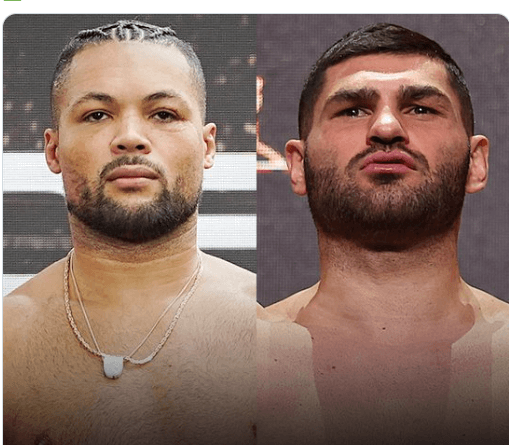
Many of the best female fighters of all time including Christy Martin, Laila Ali and others are gathering in the glitzy lights of Las Vegas this week.
Several hundred fans including current and former world champions are attending the International Women’s Boxing Hall of Fame ceremony on Friday, April 4 and 5th at the Orleans Casino in Las Vegas.
It’s one of my favorite events.
Where else can you talk to the female pioneers and stars of the 1980s and 1990s?
The last time I attended two years ago, Germany’s super star Regina Halmich spoke to the packed house about her career in boxing. She and Daisy Lang were two female world champions who sold out arenas wherever they fought. The pair of blonde fighters proved that female prizefighting could succeed.
Many times, I debated with promoters who believed women’s boxing could not succeed in the USA. Though it was popular in Germany and Mexico, various organizers felt female boxing was not appealing to the American masses.
Now promoters and media networks know women’s boxing and women’s sports have crowd appeal.
Expected to attend the IWBHOF event at Orleans will be Mexico’s Jessica Chavez and Jackie Nava who will be inducted into the women’s hall of fame along with Vaia Zaganas of Canada among many others.
It’s also a gathering place for many of the top proponents of women’s boxing including the organizers of this event such as Sue Fox whose idea spawned the IWBHOF.
Each event is unique and special.
Many of my favorite people in boxing attend this celebration of women’s boxing. Stop by the Orleans Casino on the second floor. You won’t be disappointed.
Heavyweight prospects
Heavyweights take the forefront this weekend in two pivotal battles in different continents.
In England, a pair of contenders looking to maintain their footing in the heavyweight mountain will clash as Joe Joyce (16-3, 15 KOs) meets Croatia’s Filip Hrgovic (17-1, 14 KOs) at the Co-op Live Arena in Manchester. DAZN will stream the event.
Both lost their last match and need a win to remain relevant. Joyce has lost his three of his last four, most recently coming up short in a riveting slugfest with Derek Chisora.
Meanwhile, in Las Vegas, Nevada, two young heavyweights looking to crack contender status clash as undefeated Richard Torrez (12-0,11 KOs) fights Italy’s Guido Vianello (13-2-1,11 KOs) at the Palms Casino.
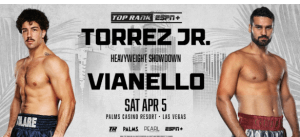
Both are Olympians who can crack and each can take a blow.
The winner moves up into contention and the other will need to scrape and claw back into relevance.
Coming up
April 12 in Atlantic City: Jarron Ennis (33-0, 29 KOs) vs Eimantis Stanionis (15-0, 9 KOs) IBF welterweight title.
April 12 Albuquerque: Fernando Vargas Jr. (16-0) vs Gonzalo Gaston (23-7); Shane Mosley Jr. (22-4) vs DeAundre Pettus (12-4).
April 19 Oceanside, Calif: Gabriela Fundora (15-0, 7 KOs) vs Marilyn Badillo (19-0-1, 3 KOs). Also, Charles Conwell (21-0, 16 KOs) vs Jorge Garcia (32-4, 26 KOs).
April 26 Tottenham Stadium, London, England; Conor Benn (23-0) vs Chris Eubank Jr. (34-3); Aaron McKenna (19-0, 10 KOs) vs Liam Smith (33-4, 20 Kos).
Fights to Watch
Sat. DAZN 11 a.m. Joe Joyce (16-3) vs Filip Hrgovic (17-1).
Sat. ESPN+ 2:30 p.m. Richard Torrez (12-0) vs Guido Vianello (13-2-1).
Sat. AMAZON PRIME VIDEO 8:00 8 p.m. Tim Tszyu (24-2) vs. Joey Spencer (19-1)
To comment on this story in the Fight Forum CLICK HERE
Featured Articles
History has Shortchanged Freddie Dawson, One of the Best Boxers of his Era
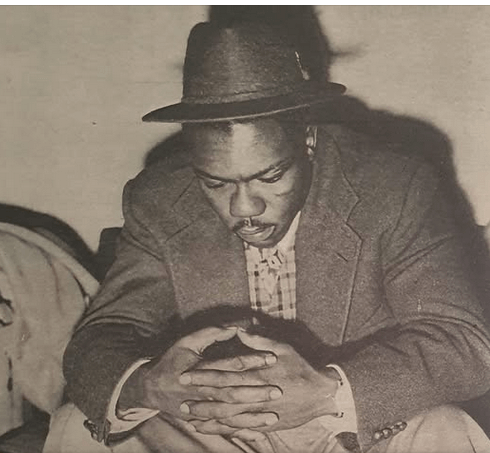
History has Shortchanged Freddie Dawson, One of the Best Boxers of his Era
This reporter was rummaging around the internet last week when he stumbled on a story in the May 1950 issue of Ebony under the byline of Mike Jacobs. Boxing was then in the doldrums (isn’t it always?) and Jacobs, the most powerful promoter in boxing during the era of Joe Louis, was lassoed by the editors of the magazine to address the question of whether the over-representation of black boxers was killing the sport at the box office.
This hoary premise had been kicking around even before the heyday of Jack Johnson, bubbling forth whenever an important black-on-black fight played to a sea of empty seats as had happened the previous year when Chicago’s Comiskey Park hosted the world heavyweight title fight between Ezzard Charles and Jersey Joe Walcott.
Jacobs ridiculed the hypothesis – as one could have expected considering the publication in which the story ran – and singled out three “colored” boxers as the best of the current crop of active pugilists: Sugar Ray Robinson, Ike Williams, and Freddie Dawson.
Sugar Ray Robinson? A no-brainer. Skill-wise the greatest of the great. Even those that didn’t follow boxing, would have recognized his name. Ike Williams? Nowhere near as well-known as Robinson, but he was then the reigning lightweight champion, a man destined to go into the International Boxing Hall of Fame with the inaugural class of 1990.
And Freddie Dawson? If the name doesn’t ring a bell, dear reader, you are not alone. I confess that I too drew a blank. And that triggered a search to learn more about him.
Freddie Dawson had four fights with Ike Williams. All four were staged on Ike’s turf in Philadelphia. Were this not the case, the history books would likely show the series knotted 2-2. Late in his career, Dawson became greatly admired in Australia. But we are jumping ahead of ourselves.
Dawson was born in 1924 in Thomasville, Arkansas, an unincorporated town in the Arkansas Delta. Likely a descendent of slaves who worked in the cotton plantations, he grew up in the so-called Bronzeville neighborhood of Chicago, the heart of Chicago’s Black Belt.
The first mention of him in the newspapers came in 1941 when he won Chicago’s Catholic Youth Organization (CYO) featherweight title. In those days, amateur boxing was big in the Windy City, the birthplace of the Golden Gloves. The Catholic Archdiocese, which ran gyms in every parish, and the Chicago Parks Department, were the major incubators.
In his amateur days, he was known as simply Fred Dawson. As a pro, his name often appeared as Freddy Dawson, although Freddie gradually became the more common spelling.
Dawson, who stood five-foot-six and was often described as stocky, made his pro debut on Feb. 1, 1943, at Marigold Gardens. Before the year was out, he had 16 fights under his belt, all in Chicago and all but two at Marigold. (Currently the site of an interdenominational Christian church, Marigold Gardens, on the city’s north side, was Chicago’s most active boxing and wrestling arena from the mid-1930s through the early-1950s. Joe Louis had three of his early fights there and Tony Zale was a fixture there as he climbed the ladder to the world middleweight title.)
The last of these 16 fights was fatal for Dawson’s opponent who collapsed heading back to his corner after the fight was stopped in the 10th round and died that night at a local hospital from the effects of a brain injury.
Dawson left town after this incident and spent most of the next year in New Orleans where energetic promoter Louis Messina ran twice-weekly shows (Mondays for whites and Fridays for blacks) at the Coliseum, a major stop on boxing’s so-called Chitlin’ Circuit.
That same year, on Sept. 19, 1944, Dawson had his first encounter with Ike Williams. He was winning the fight when Ike knocked him out with a body punch in the fourth round.
The first and last meetings between Dawson and Ike Williams were spaced five years apart. In the interim, Freddie scored his two best wins, stopping Vic Patrick in the twelfth round at Sydney, NSW, and Bernard Docusen in the sixth round in Chicago.
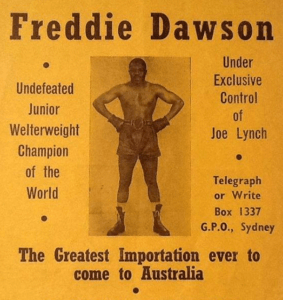
The long-reigning lightweight champion of Australia, Patrick (49-3, 43 KOs) gave the crowd a thrill when he knocked Dawson down for a count of “six” in the penultimate 11th round, but Dawson returned the favor twice in the final stanza, ending the contest with a punch so harsh that the poor Aussie needed five minutes before he was fit to leave the ring and would spend the night in the hospital as a precaution.
Dawson fought Bernard Docusen before 10,000-plus at Chicago Stadium on Feb. 4, 1949. An 8/5 favorite, Docusen lacked a hard punch, but the New Orleans cutie had suffered only three losses in 66 fights, had never been stopped, and had extended Sugar Ray Robinson the 15-round distance the previous year.
Dawson dismantled him. Docusen managed to get back on his feet after Dawson knocked him down in the sixth, but he was in no condition to continue and the referee waived the fight off. Dawson was then vacillating between the lightweight and welterweight divisions and reporters wondered whether it would be Robinson or Ike Williams when Dawson finally got his well-earned title shot.
Sugar Ray wasn’t in his future. Here are the results of his other matches with Ike Williams:
Dawson-Williams II (Jan. 28, 1946) – The consensus on press row was 7-2-1 or 7-3 for Dawson, but the match was ruled a draw. “[The judges and referee] evidently saw [Williams] land punches that nobody else did,” said the ringside reporter for the Philadelphia Inquirer.
Dawson-Williams III (Jan. 26, 1948) – Dawson lost a majority decision. The scores were 6-4, 5-4-1, and 4-4-2. The decision was booed. Ike Williams then held the lightweight title, but this was a non-title fight. (It was tough for an outsider to get a fair shake in Philadelphia, home to Ike Williams’ co-manager Frank “Blinky” Palermo who would go to prison for his duplicitous dealings as a fight facilitator.)
Dawson-Williams IV (Dec. 5, 1949) – This would be Freddie Dawson’s only crack at a world title and he came up short. Ike Williams retained the belt, winning a unanimous decision. The fight was close – 8-7, 8-7, 9-6 – but there was no controversy.
Dawson made three more trips to Australia before his career was finished. On the first of these trips, he knocked out Jack Hassen, successor to Vic Patrick as the lightweight champion of Australia. A 1953 article in the Sydney Sunday Herald bore witness to the esteem in which Dawson was held by boxing fans in Australia: “None of our boxers could withstand his devastating attacks which not only knocked them out but also knocked years off their careers,” said the author. “It is doubtful whether any Australian boxer in any division could have beaten Dawson.”
Dawson had his final fights in the Land Down Under, finishing his career with a record of 103-14-4 while answering the bell for 962 rounds. Following what became his final fight, he had an eye operation in Sydney that was reportedly so intricate that it required a two-week hospital stay. He injured the eye again in Manila while sparring in preparation for a match with the welterweight champion of the Philippines, a match that had to be aborted because of the injury. Dawson then disappeared, by which we mean that he disappeared from the pages of the newspaper archives that allow us to construct these kinds of stories.
What about Freddie Dawson the man? A 1944 story about him said he was an outstanding all-around athlete, “a champion in all athletic undertakings – basketball, baseball, track and even jitterbugging.” A story in a Sydney paper as he was preparing to meet Vic Patrick informs us that he had two young children, ages 2 and 1, owned his own home in Chicago, and drove a two-year-old Cadillac. But beyond these flimsy snippets, Dawson the man remains elusive.
What we learned, however, is that he was one of the most underrated boxers to come down the pike in any era, a borderline Hall of Famer who ought not have fallen through the cracks. Inside the ring, this guy was one tough hombre.
To comment on this story in the Fight Forum CLICK HERE
Featured Articles
Ringside at the Fontainebleau where Mikaela Mayer Won her Rematch with Sandy Ryan
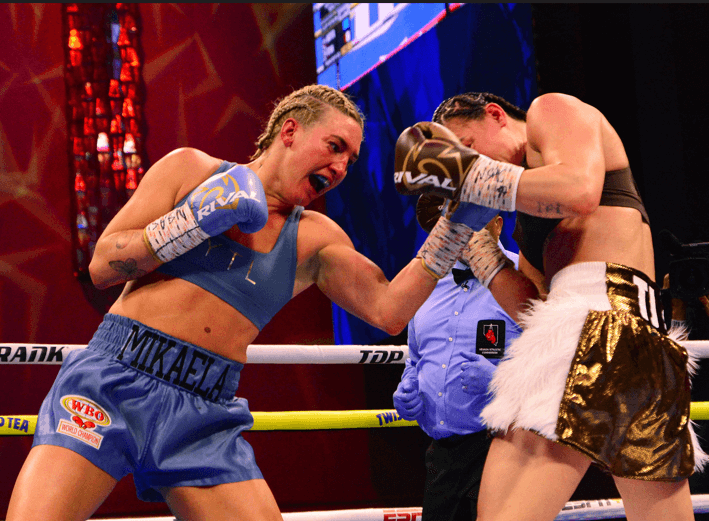
LAS VEGAS, NV — The first meeting between Mikaela Mayer and Sandy Ryan last September at Madison Square Garden was punctuated with drama before the first punch was thrown. When the smoke cleared, Mayer had become a world-title-holder in a second weight class, taking away Ryan’s WBO welterweight belt via a majority decision in a fan-friendly fight.
The rematch tonight at the Fontainebleau in Las Vegas was another fan-friendly fight. There were furious exchanges in several rounds and the crowd awarded both gladiators a standing ovation at the finish.
Mayer dominated the first half of the fight and held on to win by a unanimous decision. But Sandy Ryan came on strong beginning in round seven, and although Mayer was the deserving winner, the scores favoring her (98-92 and 97-93 twice) fail to reflect the competitiveness of the match-up. This is the best rivalry in women’s boxing aside from Taylor-Serrano.
Mayer, 34, improved to 21-2 (5). Up next, she hopes, in a unification fight with Lauren Price who outclassed Natasha Jonas earlier this month and currently holds the other meaningful pieces of the 147-pound puzzle. Sandy Ryan, 31, the pride of Derby, England, falls to 7-3-1.
Co-Feature
In his first defense of his WBO world welterweight title (acquired with a brutal knockout of Giovani Santillan after the title was vacated by Terence Crawford), Atlanta’s Brian Norman Jr knocked out Puerto Rico’s Derrieck Cuevas in the third round. A three-punch combination climaxed by a short left hook sent Cuevas staggering into a corner post. He got to his feet before referee Thomas Taylor started the count, but Taylor looked in Cuevas’s eyes and didn’t like what he saw and brought the bout to a halt.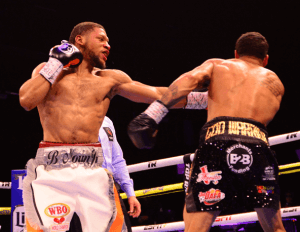
The stoppage, which struck some as premature, came with one second remaining in the third stanza.
A second-generation prizefighter (his father was a fringe contender at super middleweight), the 24-year-old Norman (27-0, 21 KOs) is currently boxing’s youngest male title-holder. It was only the second pro loss for Cuevas (27-2-1) whose lone previous defeat had come early in his career in a 6-rounder he lost by split decision.
Other Bouts
In a career-best performance, 27-year-old Brooklyn featherweight Bruce “Shu Shu” Carrington (15-0, 9 KOs) blasted out Jose Enrique Vivas (23-4) in the third round.
Carrington, who was named the Most Outstanding Boxer at the 2019 U.S. Olympic Trials despite being the lowest-seeded boxer in his weight class, decked Vivas with a right-left combination near the end of the second round. Vivas barely survived the round and was on a short leash when the third stanza began. After 53 seconds of round three, referee Raul Caiz Jr had seen enough and waived it off. Vivas hadn’t previously been stopped.
Cleveland welterweight Tiger Johnson, a Tokyo Olympian, scored a fifth-round stoppage over San Antonio’s Kendo Castaneda. Johnson assumed control in the fourth round and sent Castaneda to his knees twice with body punches in the next frame. The second knockdown terminated the match. The official time was 2:00 of round five.
Johnson advanced to 15-0 (7 KOs). Castenada declined to 21-9.
Las Vegas junior welterweight Emiliano Vargas (13-0, 11 KOs) blasted out Stockton, California’s Giovanni Gonzalez in the second round. Vargas brought the bout to a sudden conclusion with a sweeping left hook that knocked Gonzalez out cold. The end came at the 2:00 minute mark of round two.
Gonzalez brought a 20-7-2 record which was misleading as 18 of his fights were in Tijuana where fights are frequently prearranged. However, he wasn’t afraid to trade with Vargas and paid the price.
Emiliano Vargas, with his matinee idol good looks and his boxing pedigree – he is the son of former U.S. Olympian and two-weight world title-holder “Ferocious” Fernando Vargas – is highly marketable and has the potential to be a cross-over star.
Eighteen-year-old Newark bantamweight Emmanuel “Manny” Chance, one of Top Rank’s newest signees, won his pro debut with a four-round decision over So Cal’s Miguel Guzman. Chance won all four rounds on all three cards, but this was no runaway. He left a lot of room for improvement.
There was a long intermission before the co-main and again before the main event, but the tedium was assuaged by a moving video tribute to George Foreman.
Photos credit: Al Applerose
To comment on this story in the Fight Forum CLICK HERE
-
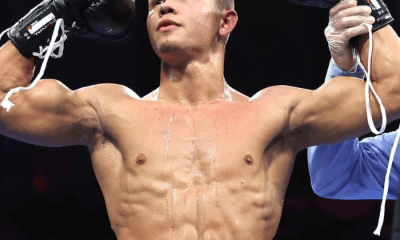
 Featured Articles3 weeks ago
Featured Articles3 weeks agoA Fresh Face on the Boxing Scene, Bryce Mills Faces His Toughest Test on Friday
-
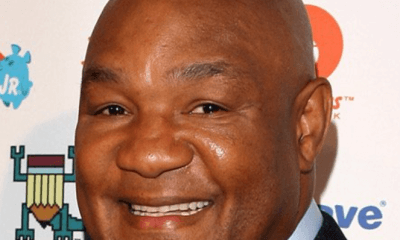
 Featured Articles2 weeks ago
Featured Articles2 weeks agoBernard Fernandez Reflects on His Special Bond with George Foreman
-

 Featured Articles2 weeks ago
Featured Articles2 weeks agoA Paean to George Foreman (1949-2025), Architect of an Amazing Second Act
-
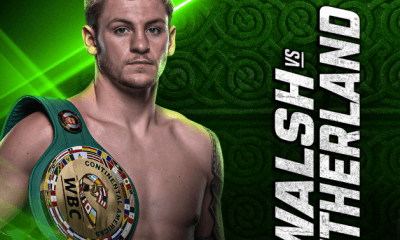
 Featured Articles3 weeks ago
Featured Articles3 weeks agoNotes and Nuggets from Thomas Hauser: Callum Walsh Returns to Madison Square Garden
-
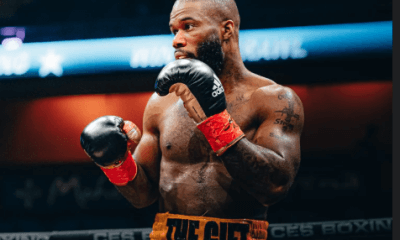
 Featured Articles2 weeks ago
Featured Articles2 weeks agoSpared Prison by a Lenient Judge, Chordale Booker Pursues a World Boxing Title
-

 Featured Articles4 weeks ago
Featured Articles4 weeks agoFriday Boxing Recaps: Observations on Conlan, Eubank, Bahdi, and David Jimenez
-
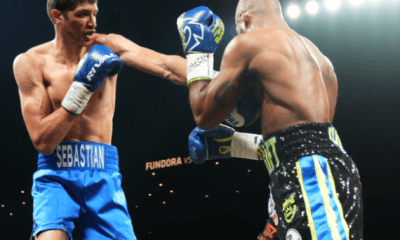
 Featured Articles2 weeks ago
Featured Articles2 weeks agoSebastian Fundora TKOs Chordale Booker in Las Vegas
-
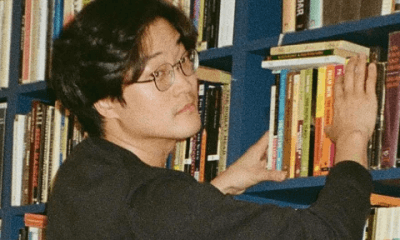
 Featured Articles4 weeks ago
Featured Articles4 weeks agoA Wide-Ranging Conversation on the Ills of Boxing with Author/Journalist Sean Nam
















